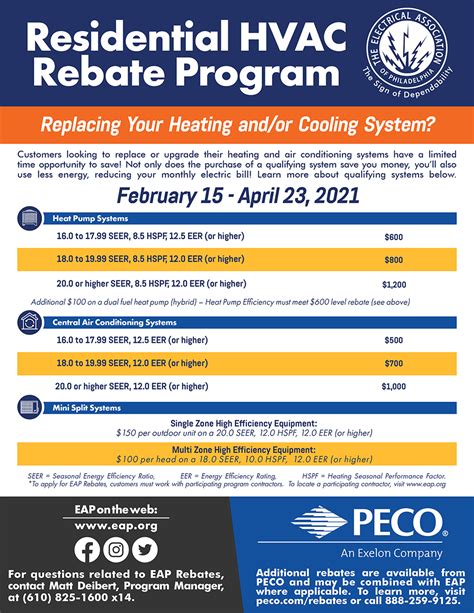Maximize Savings: Your Complete Guide to Mini Split Rebates in 2025!
As energy costs continue to rise, homeowners are increasingly discovering the benefits of air conditioning systems that not only provide comfort but also efficiency. Mini-split systems have emerged as a popular choice due to their effectiveness and varied applications in different settings. This guide is designed to help you maximize your savings through mini-split rebates available in 2025. We will cover what mini-split systems are, how rebates work, the types of rebates you can expect, and other financial incentives that may be available to you.
What are Mini Split Systems?
Mini-split systems, or ductless air conditioning units, are efficient heating and cooling solutions that consist of an outdoor compressor and one or more indoor air-handling units. Unlike traditional HVAC systems, mini-splits do not require ductwork, making their installation less invasive and generally quicker and more cost-effective.
The Benefits of Mini Split Systems
- Energy Efficiency: Mini-split systems use inverter technology, allowing them to vary their power output based on the demand, leading to significant energy savings.
- Zone Control: Each indoor unit can be programmed separately, allowing you to cool or heat only the areas in use, thus optimizing energy consumption.
- Easy Installation: The lack of ductwork means quicker installation, reducing labor costs.
- Improved Indoor Air Quality: These systems often include filters that can improve air quality by reducing dust and pollutants.
Understanding Mini Split Rebates
In 2025, many homeowners can expect to find various rebate programs aimed at encouraging the adoption of energy-efficient technologies. Mini-split system rebates are often offered by federal, state, and local governments, as well as utility companies. These rebates can significantly reduce the upfront cost of purchasing and installing mini-split units.
Types of Mini Split Rebates
- Federal Tax Credit: In 2025, homeowners may qualify for a federal tax credit when installing an Energy Star-rated mini-split system. This credit can be a portion of the total installation cost.
- State Rebates: Many states offer their own specific rebates, which can vary based on location and efficiency ratings of the system being purchased.
- Utility Company Rebates: Several utility companies provide rebates to customers who install energy-efficient appliances. Be sure to check with your local utility to see what’s available.
How to Find Available Rebates
Finding available rebates can be straightforward if you know where to look. Here’s a step-by-step process:
- Visit the Energy Star website: This federal program lists all Energy Star-certified products, including mini-split systems, and provides information on eligible tax credits.
- Check with your State Energy Office: Each state has its own energy office that can provide details on local rebates.
- Contact Your Utility Provider: Call or visit your utility company’s website to learn about their specific programs and any deadlines for applying.
Steps to Apply for Rebates
Once you’ve identified available rebates, follow these steps to maximize your savings:
- Select an Energy-Efficient Model: Choose a mini-split model that meets the criteria for available rebates.
- Professional Installation: Hiring a qualified HVAC professional for installation is often necessary to qualify for rebates, so ensure that you choose a reputable contractor.
- Save All Documentation: Keep your receipts, invoices, and any other required documents handy for when you apply for the rebates.
- Complete the Application: Each program will have specific requirements, so carefully fill out each application as instructed.
- Submit Your Application: Make sure to submit your application before any deadlines to avoid missing out on savings!
Conclusion
In 2025, mini-split systems will not only enhance your home’s comfort but also offer a way to save significantly through rebates and incentives. By investing in a mini-split system, you’re choosing an energy-efficient option that benefits both your wallet and the environment. Remember to research available rebates in your area, choose the right model, and ensure professional installation to get the most out of your investment. Taking these steps will help you enjoy a comfortable home while maximizing your savings.
Frequently Asked Questions (FAQs)
1. Are mini-split systems worth the investment?
Yes, mini-split systems offer considerable energy savings, enhanced comfort through zone control, and can potentially provide significant rebates that make the investment worthwhile.
2. How much can I save with mini-split rebates?
The savings can vary based on the rebate programs available in your area, but homeowners can often save hundreds or even thousands of dollars when combined with federal tax credits and local utility savings.
3. Can I install a mini-split system myself to save on labor costs?
While it’s possible to purchase DIY mini-split kits, for most rebate programs, professional installation is required to ensure compliance with regulations and to maximize efficiency and performance.
4. Where can I check the eligibility of my mini-split for rebates?
Your local energy office or the Energy Star website is a great resource for checking product eligibility and available rebates.
5. Are there any additional benefits to mini-split systems beyond rebates?
Yes, beyond rebates, mini-split systems are known for their flexibility in installation, energy efficiency, and ability to provide consistent comfort throughout a home. They also require less maintenance compared to traditional HVAC systems.
Download Mini Split Rebates 2025
